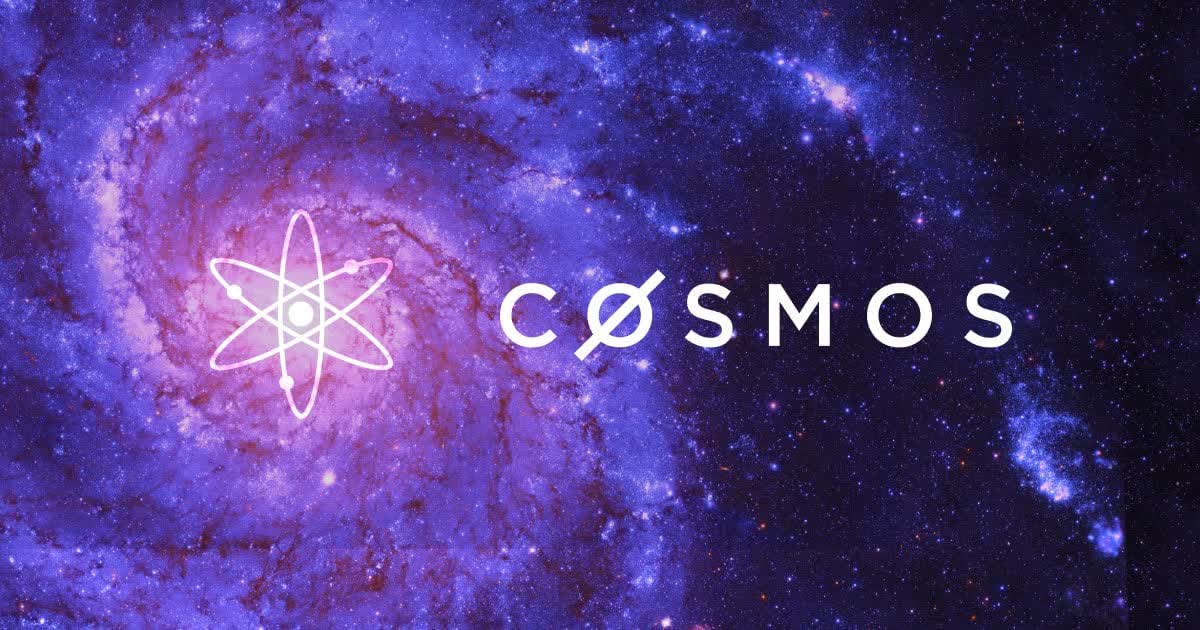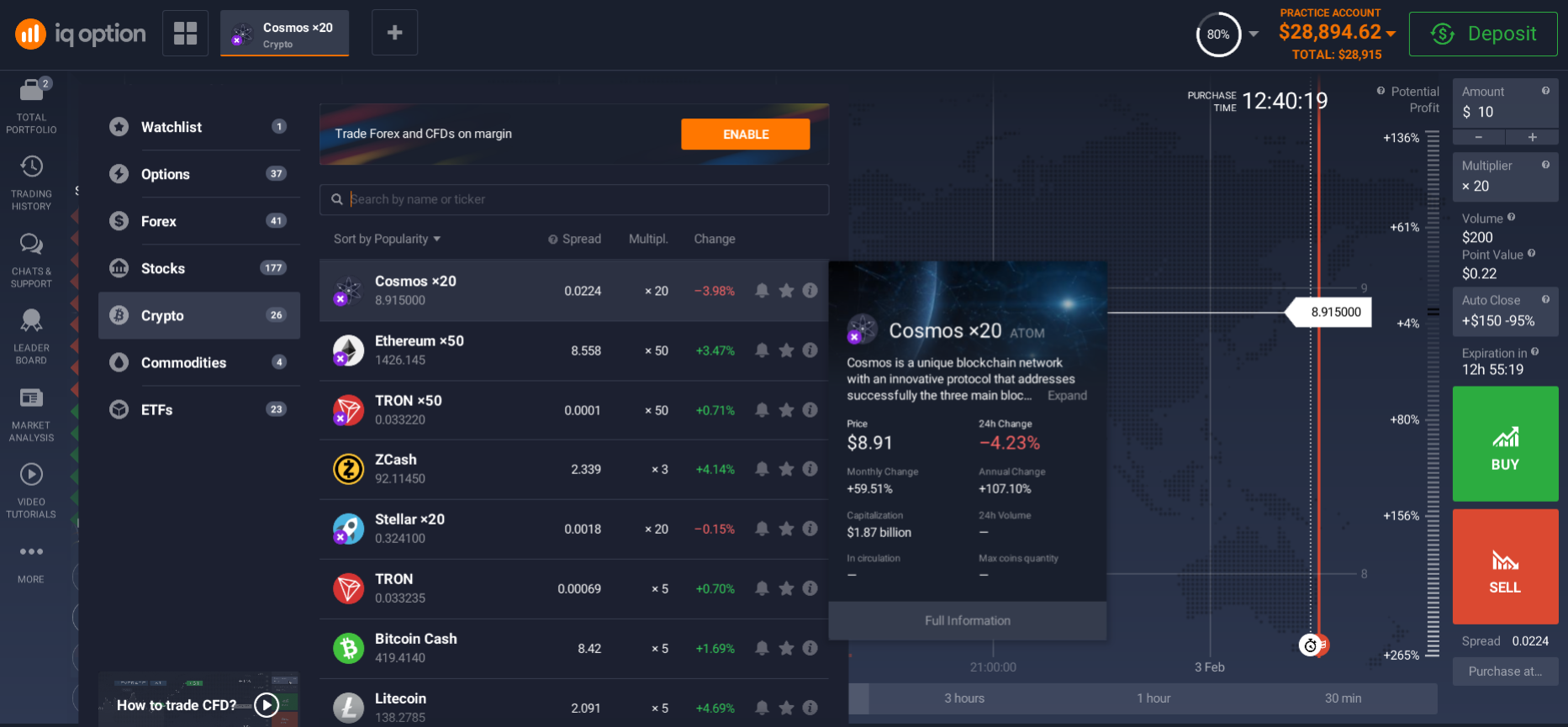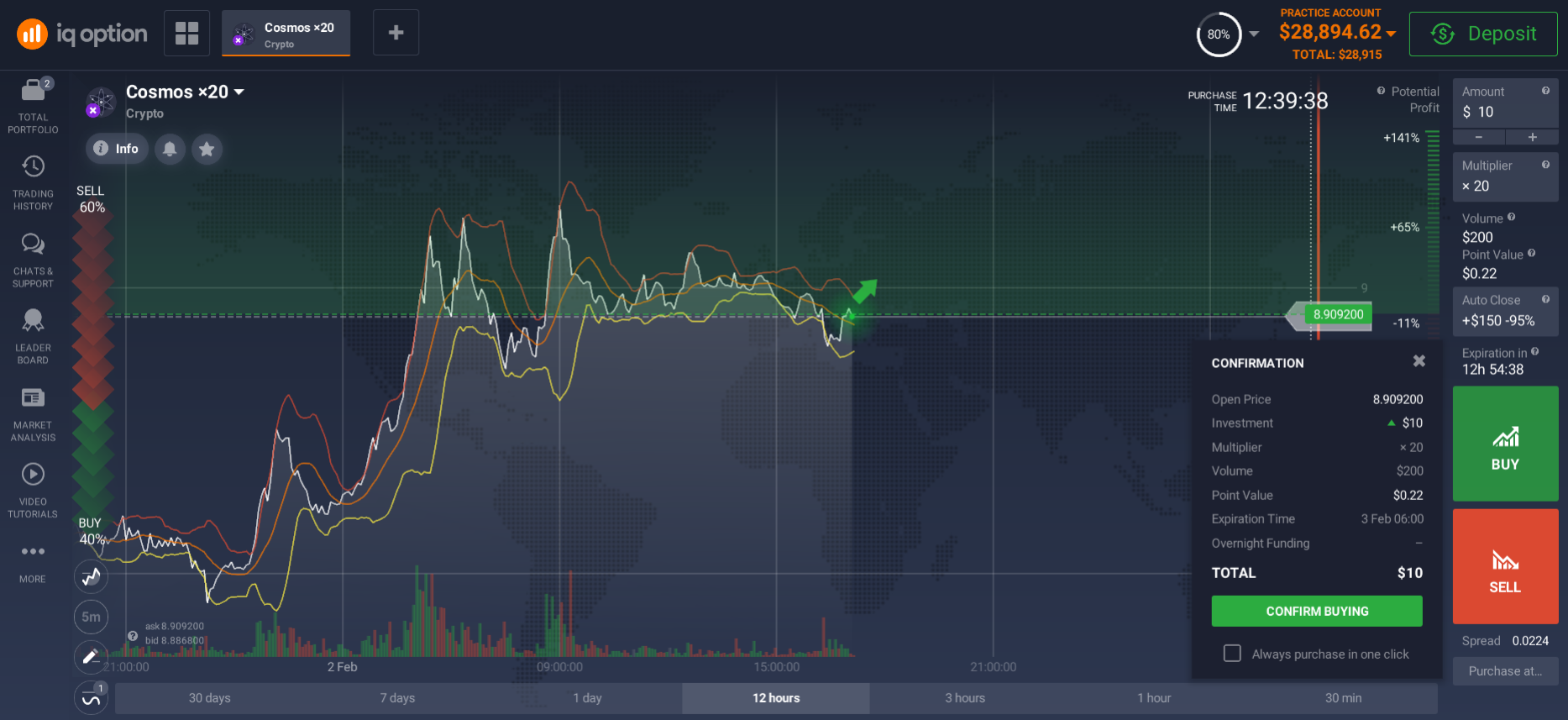Buy Cosmos (ATOM)
Cosmos (ATOM)
Technical features
The Cosmos platform is based on three components:
- Tendermint Core is designed to integrate system and consensus protocols. The core is based on Tendermint BFT and IBS crypto-protocol connecting independent fragments.
- Application Blockchain Interface (ABCI) is BFT rendering of DApps in multiple computer languages. The ABCI functionality makes it possible to combine Tendermint Core and Cosmos SDK and create decentralized applications in almost any programming language.
- Cosmos SDK or "the Base Coin" simplifies ABCI creation and improves blockchain functionality, allowing developers to focus on building custom applications in a standardized environment.
Cosmos (atom) supports various cryptocurrencies and programming languages. The core provides protection for the Cosmos Hub, the second-tier blockchains are completely independent and do not connect directly to the Tendermint Core. The reconciliation mechanism makes it possible to create new DApps and payment networks using the Cosmos SDK and run them on Tendermint.

How does the Cosmos blockchain work?
The system consists of independent modules called Zones. They are connected to the main blockchain hub. This is reminiscent of the plot of one science fiction movie. There, in order to move from planet Earth to other worlds, you first had to get to the Centrum, around which other planets were located like petals.
The zones interact with the center, maintaining the optimal state of the entire ecosystem. To some extent, this reconciliation mechanism is similar to sharding.
But in the cosmos system, each shard is a blockchain of a separate cryptocurrency.
Zones between blockchains act as communication gateways. Trusted cross-chain nodes are synchronized with the Cosmos Hub. They also need to run a full node on the other side of the bridge in order to fix the moment of transfer of assets. The “original” coins are frozen in a multi-signature scenario until the transaction is completed and the tokens are destroyed on the cross-bridged chain.

The blockchain hub is actually a decentralized exchange office. The IBC protocol, purely in theory, can unite the Bitcoin, Ethereum, ZeroCash, CryptoNote blockchains with each other, despite different algorithms. But in practice this has not yet been implemented. Developers can observe the semantic meaning of commands of a particular programming language in a specific application on the IBC protocol. This feature allows transactions of valuable assets from one blockchain to another, while maintaining all contractual features.

Who is working on the project?
In addition to leading developers Ethan Buchman and Joe Kwon, a group of non-profit foundations and teams of blockchain programmers are developing the Cosmos project. Of particular note are the Interchain Foundation (ICF) and IRIS Ltd funds, as well as the computer software development company All in Bits Inc.
Mining Сosmos
Traditional mining of the Сosmos (Atom) digital asset is impossible, the reward for maintaining the network is paid only to validators. An ordinary user cannot get into their number in any way.
The only way to make money is staking. You delegate Atom coin to one of the validators and get a percentage of its profit.

Conclusion
The idea of combining blockchains in one heterogeneous ecosystem is worth considering. The startup offers users a number of unique functions and, in principle, the Сosmos (Atom) can speed up and reduce the cost of the cryptocurrency exchange process.
How to buy Cosmos in the United Arab Emirates?
You can buy Atom on the exchange. Let's take a look at what a cryptocurrency exchange is.
A cryptocurrency exchange is a place (platform, service) where you can both exchange cryptocurrency for another, and trade them on an ongoing basis to make a profit.
Cryptocurrency exchanges
Cryptocurrency exchanges function as large (or not very large) online services where you can buy or sell cryptocurrency, making money on the exchange rate difference between pairs. At the same time, the most famous services are already acquiring features characteristic of exchanges - for example, they allow conducting margin transactions (on credit, with a certain "leverage"). Users point to several points:
- The technical support of such "exchanges" does not fully protect the participants from fraud
- In addition to the technical side, the situation with the legal support of transactions is rather complicated
- Some of the services are projects with a short lifespan, from which it is important to have time to withdraw funds - before they are closed
How to make money on the cryptocurrency exchange?
TTo make money on the cryptocurrency exchange, you must first acquire a certain amount of such currency, for example, buy Cosmos, then enter it into the system (on the exchange) and exchange it at the most favorable rate for other currencies, including fiat. Depending on the current exchange rate and the exchange rate difference, you can get a fairly significant profit.
How to Invest in Cosmos in the United Arab Emirates?
You can invest in Cosmos through CFDs.
Cryptocurrencies are usually bought and sold on specialized exchanges. However, there is another way - trading using contracts for difference (CFD). Today we will look at this relatively complex financial instrument and explain how it works in simple terms.

What is CFD?
A CFD is an agreement between a trader and a broker. If a trader buys a Bitcoin CFD, he does not own the cryptocurrency itself. He only owns a contract, which indicates at what price he bought the coin. At any time, a trader can close a position and return his contract to the broker. If his prediction turned out to be correct, he will receive an appropriate reward. In case of an error, the same amount will be debited from his account. With the help of CFDs, traders can bet on both growth and decline.
Essential terms for CFD traders
To understand the basics of CFD trading, you should recall some of the most common terms and concepts:
- Long or short position
You enter a long position if you think the market will rise. You enter a short position if you are preparing for a decline.
- Spread
The most common way to compensate a CFD broker. Spread is the difference between bid and ask prices.
- Leverage
Leverage allows you to increase your effective capital. Using leverage allows you to double your profits with the correct forecast. However, leverage not only multiplies profits, but also proportionally increases losses.
- Stop loss
To avoid excessive losses, it is necessary to apply stop losses. These orders are automatically triggered and close the position when a certain price is reached.
- Take profit
This type of order automatically closes a position upon reaching a specific profit, the size of which is determined before the transaction is executed.

Who is CFD trading in cryptocurrencies for?
Leveraged (or margin) trading is not suitable for all cryptocurrency investors. It is recommended only for traders who open positions for a few minutes or hours. Some brokers charge additional fees when the position is rolled over to the next day.
If properly organized, margin trading can be extremely profitable as the cryptocurrency market is highly volatile.
Pros of CFD trading cryptocurrencies
First of all, transactions are executed very quickly and allow you to bet not only on the growth, but also on the decline of cryptocurrencies. In addition, anyone can open a free demo account that does not require an initial investment. It allows novice crypto traders to practice and get comfortable in the market. Finally, you can start trading with only a few dollars and use the broker's support at any time.
Cryptocurrency security
For cryptocurrencies, two tools are most commonly used: hash functions and cryptographic digital signatures. If, for ordinary money transfers, you need to notify the bank and sign the check that it will issue, then the cryptocurrency financial flow does not provide for control by the Central Bank. Although transactions also need to be confirmed with a signature - not a physical one, but a cryptographic one.
Information about cryptocurrency is stored on a large number of computers that are networked, and in each of the accounts it must be the same.
Previously, they did not know how to synchronize information in open systems, but Satoshi Nakamoto proposed a solution to the problem in his work on bitcoin. One of the main cryptographic solution tools is hash functions. They are used to build a blockchain where all transactions are recorded.

What methods ensure the anonymity and confidentiality of cryptocurrencies?
- One of the main methods is a zero knowledge proof protocol. He confirms that you have some information without disclosing its content. This tool, useful for cryptocurrencies, has been used for the last two to three years. Before that, it was used to solve other practical problems.
The blockchain consists of many computers connected to a network. When you transfer money to another user, all participants see this operation. Zero-knowledge proof allows you to protect information about how much money is in a particular account, a block of a distributed database, this is encrypted using hash functions. To confirm that you are making a transaction correctly, you provide a basic property of the records without naming specific numbers. This is how zero knowledge proof works.
- Homomorphic encryption is sometimes used to preserve anonymity. It allows you to perform mathematical operations on encrypted data that match the results of calculations on the original data. The main thing in all these methods is to ensure the correct synchronization of the information of the system elements.
Invest in Cosmos and may all your deals be successful!




